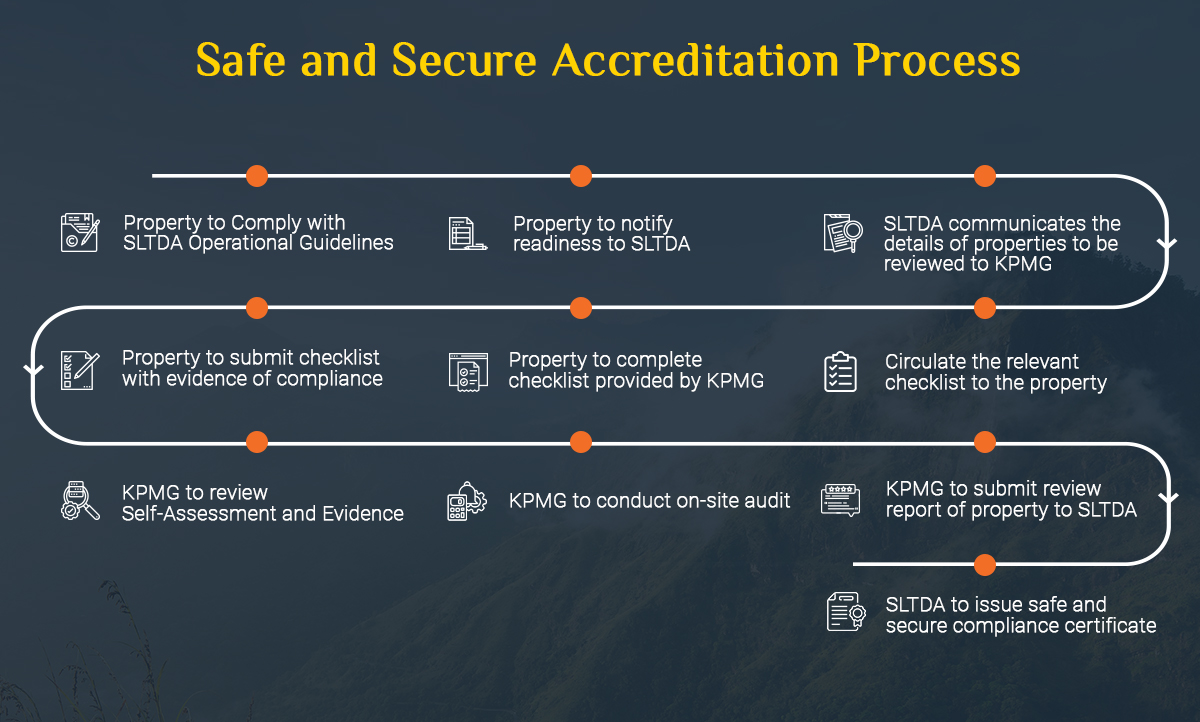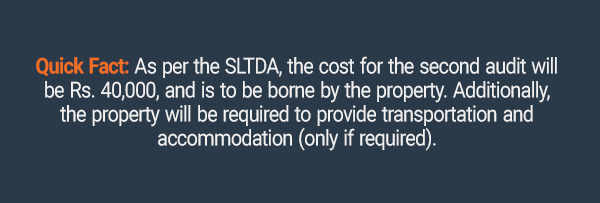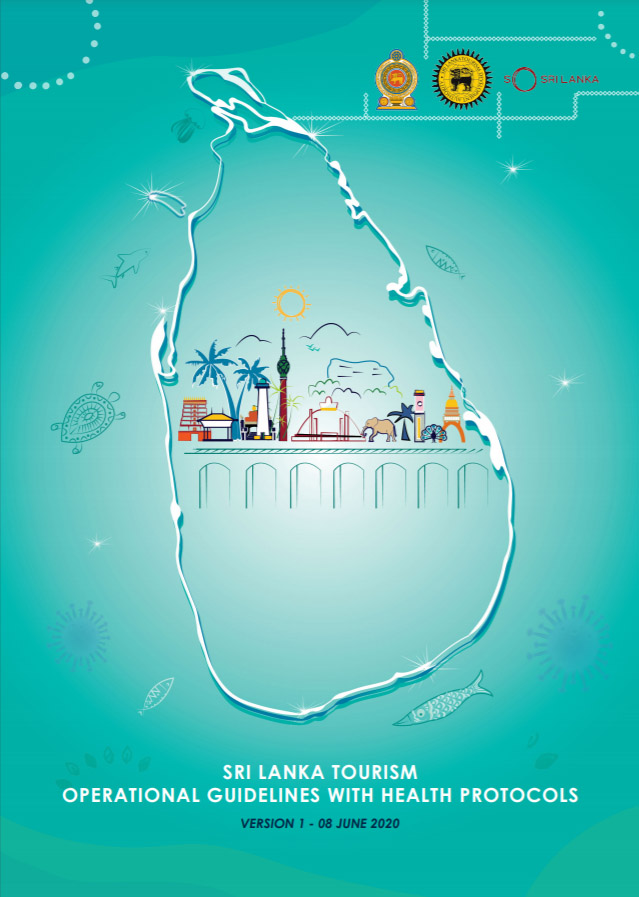What You Need to Know About Sri Lanka Tourism’s COVID-19 Safe & Secure Certification
In a bid to prepare Sri Lanka’s tourism industry for when the country reopens for international travel, the Sri Lanka Tourism Development Authority (SLTDA) has begun the process of assessing compliance with operational guidelines, and issuing the COVID-19 safe and secure certification for registered accommodation and service providers. The compliance certification ensures that hotels and other service providers have successfully implemented the COVID-19 operational guidelines and health protocols released by the SLTDA in June this year. The compliance certification is important to industry operators, as tourists will only be able to book accommodation and services from certified establishments, once tourism resumes.
The SLTDA awarded the contract for the independent assessment of the Safe and Secure Compliance Certification to KPMG Sri Lanka at the end of July, following a tender submission. The process has already begun, with the completion of 39 properties to date, while the checklist has been circulated to over 180 properties. KPMG Sri Lanka has drawn from the learnings and experience of its Singaporean counterparts, who have undertaken the hospitality audit of Singapore’s SG Clean initiative.
The Sri Lanka Tourism Alliance had the opportunity to speak with KPMG Sri Lanka partner, Jagath Perera on the country’s Safe and Secure Assessment and Certification process, and outlined below are the key takeaways that we hope will help Alliance members in terms of awareness and readiness. Jagath is a Partner and the Head of Risk Consulting at KPMG Sri Lanka. He leads the Forensic and Internal Audit Services in Sri Lanka. He has given leadership to hospitality and leisure industry advisory services while managing the KPMG Maldives office.
Q: What is the process for the Safe and Secure certification?
A: We have developed checklists based on the operational guidelines outlined by the SLTDA, and shared it with tourism establishments for self-assessment. Once received, the property or service providers should complete the checklists and submit with evidence of compliance as per the guidelines. The response to the checklist and evidence will then be reviewed by our team and if we deem the business ready, we will conduct an on-site review to substantiate the claims made by the property or service provider.
Once this process is complete, we do an overview of the findings and submit a report of our recommendations to the SLTDA. Based on our report, the SLTDA will complete the Safe and Secure Certification process by issuing a compliance certificate to the establishment, or inform them which areas need to be further improved. If responses are inadequate, such tourism establishments or service providers may not be recommended. However, with regard to tour guides and drivers, the assessment and certification process shall be based on testing of knowledge.
The entire process is conducted by a team that has been specially selected, based on their experience and expertise. We consult leisure sector professionals, and medical professionals, during the review process if required. While the SLTDA does not get involved in the compliance review process, we do refer to them to clarify certain guidelines and their expectations.

Q: What are the guidelines operators are meant to follow in order to meet the requirements of the assessment?
A: All establishments and service providers need to follow the operational guidelines outlined and published by the SLTDA. These guidelines have been developed based on WHO guidelines, in consultation with the Ministry of Health, and taking other benchmarks into consideration as well. This is the bare minimum that is expected of tourism industry operators. Properties can do more if they have the capacity to do so.
Q: What are the audit focus areas?
A: The following areas are considered to be very important:
a. Prescreening of guests and employees
b. Wearing relevant PPEs
c. Social distancing
d. Frequent cleaning, disinfecting
e. Rapid response
Additionally, there will be more specific areas that we consider, depending on the nature of the business.
Q: How should tourism operators prepare for this process?
A: While it is important that they adhere to all guidelines outlined by the SLTDA, it would do well to pay special attention to disinfection, sanitization, PPE and social distancing protocols. Our recommendation is that operators create ample awareness amongst staff, so they can be better prepared to handle guests in adherence to protocols, and also know how to act in an emergency situation. The establishment and training of Rapid Response Teams to deal with a possible COVID-19 situation is also very important. We will look into how these teams have been set up, how prepared they are to deal with a situation and how well their existence has been communicated to the entire staff. Overall, I believe that communication and awareness is as important as having the correct protocols in place.
Q: How are properties selected for the process?
A: The SLTDA has instructed registered tourism establishments, service providers, tour guides and drivers to submit a request of readiness for the Safe and Secure Compliance Process. Based on the requests received, SLTDA submits a list for us to commence the compliance review. Once we receive the details, we send out self-assessment checklists to the respective properties. When they revert with their self-declaration and evidence, we do the internal desktop review, conduct the onsite review and compile our recommendation report for the SLTDA. KPMG does not decide who should be reviewed, or the order in which properties are selected for review. That decision lies with the SLTDA. As per plan, SLTDA expects us to complete the review process within three months, mostly probably by end-October, 2020. I believe we have circulated the self-assessment checklist to the properties that initially applied for compliance certification and currently await their response.
Q: What has been your experience working with the SLTDA so far?
A: I believe that our team has been working well with the SLTDA from the beginning of this project. There is frequent communication and discussion between KPMG and SLTDA, which has contributed to the smooth flow of the process thus far.
Q: What is the next step for operators who fail the audit?
A: If operators have not satisfactorily complied with the guidelines or implemented the necessary protocols, they will be informed of such by the SLTDA. They will be guided by the SLTDA on which areas need improvement so that they can become fully compliant. If the SLTDA requests us to do a further audit of the property, we will do so. KPMG is not currently aware how much properties will have to pay for the second audit, this will be determined by the SLTDA.


The Alliance had the opportunity to speak with some properties that have already been assessed and reviewed by KPMG. Below are some key insights that we think will be helpful to organizations that are currently undergoing the assessment or are yet to apply for the certification.
Process of applying for certification
The properties initially submitted a letter in writing to the SLTDA requesting the assessment and certification. However, an online system has now been implemented so properties can apply through that. Use this link to apply.
Once the request has been processed and passed on to KPMG by SLTDA, the properties are sent a self-assessment questionnaire which they need to complete and submit to KPMG with evidence. These are all uploaded onto a system. Details will be provided by KPMG.
Implementing operational guidelines stipulated by the SLTDA
Most of the guidelines stipulated by the SLTDA were already within the safe and hygiene protocols implemented by many properties. Therefore, it was merely a process of enhancing existing protocols and increasing awareness and communication between staff.
Preparing properties and staff for the assessment
- Rigorous training of all departments, including presentations and role plays.
- Department wide refresher training every fortnight.
- Implementation of cleaning and sanitisation checklists for all operational processes.
- Appointing dedicated staff members to audit checklists and ensure they are maintained and practised accurately.
Challenges in completing the self-assessment portion and providing evidence to KPMG
Did not expect KPMG to request such a large amount of evidence, checklists, SOPs and photographs to be uploaded to the system. The process to complete the entire questionnaire took approximately 8 hours.
On-site assessment of property by KPMG
Properties are made aware ahead of time before the KPMG team arrives for the on-site assessment. Properties are informed 48 hours prior, in order to make necessary arrangements to accommodate the team.







